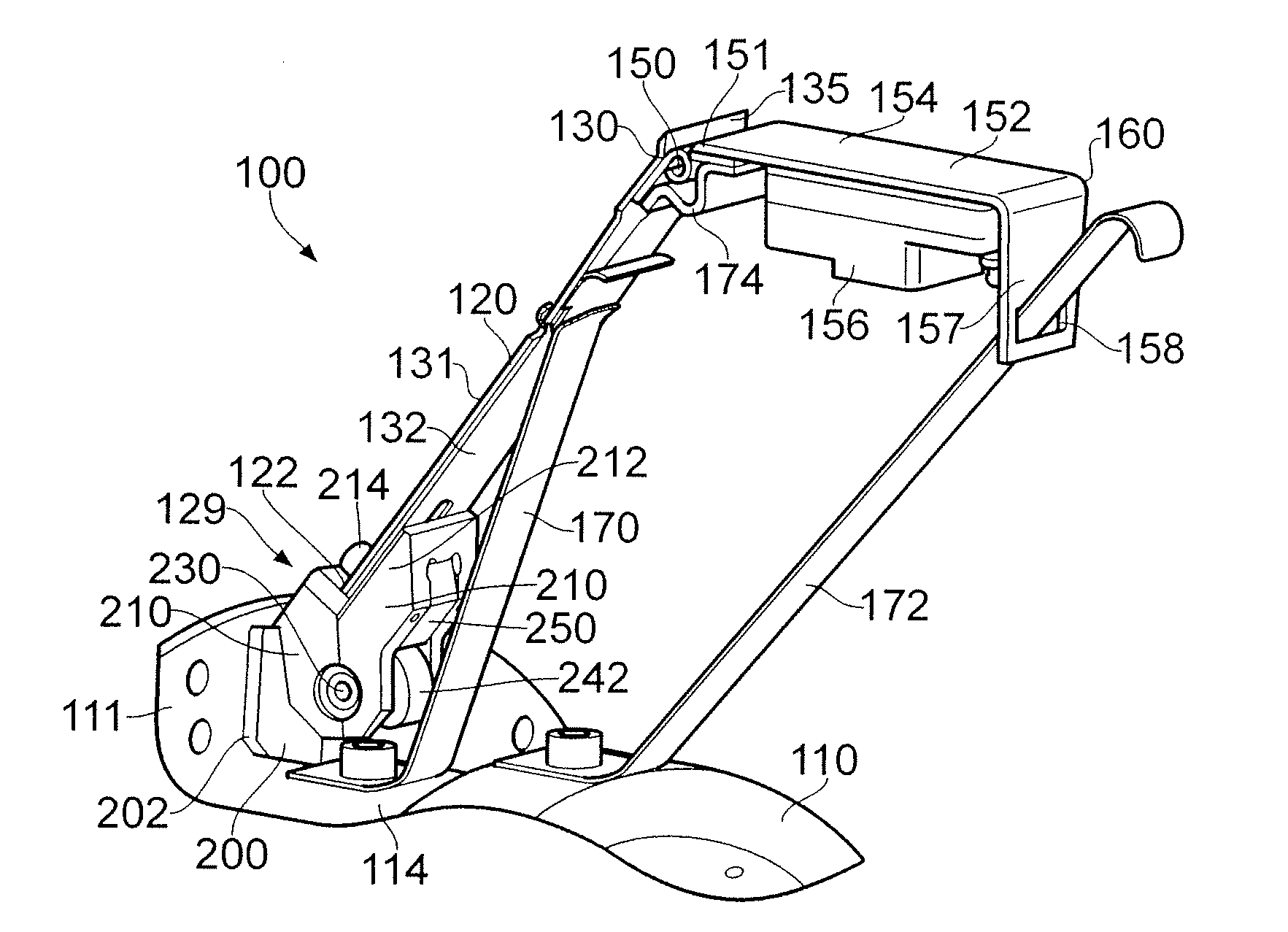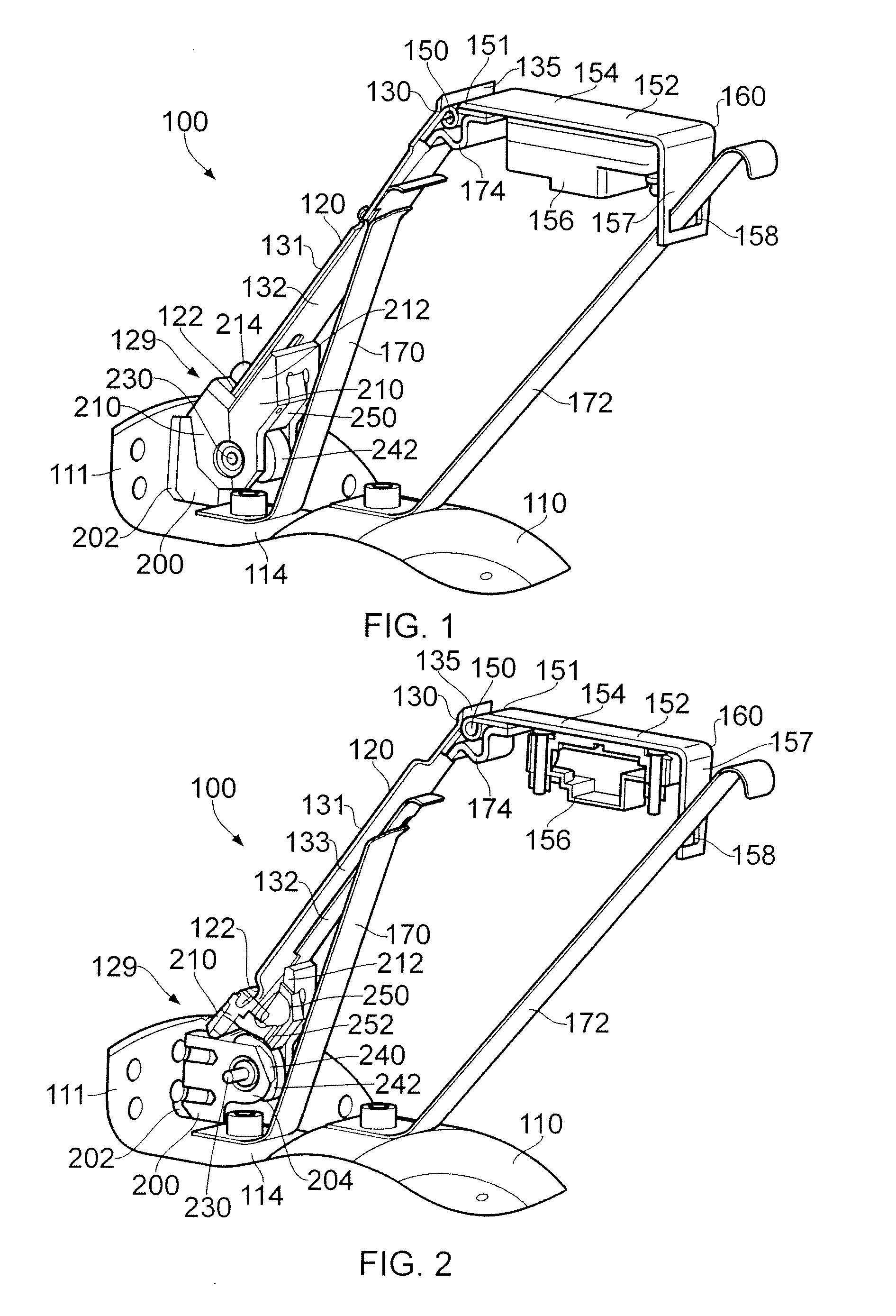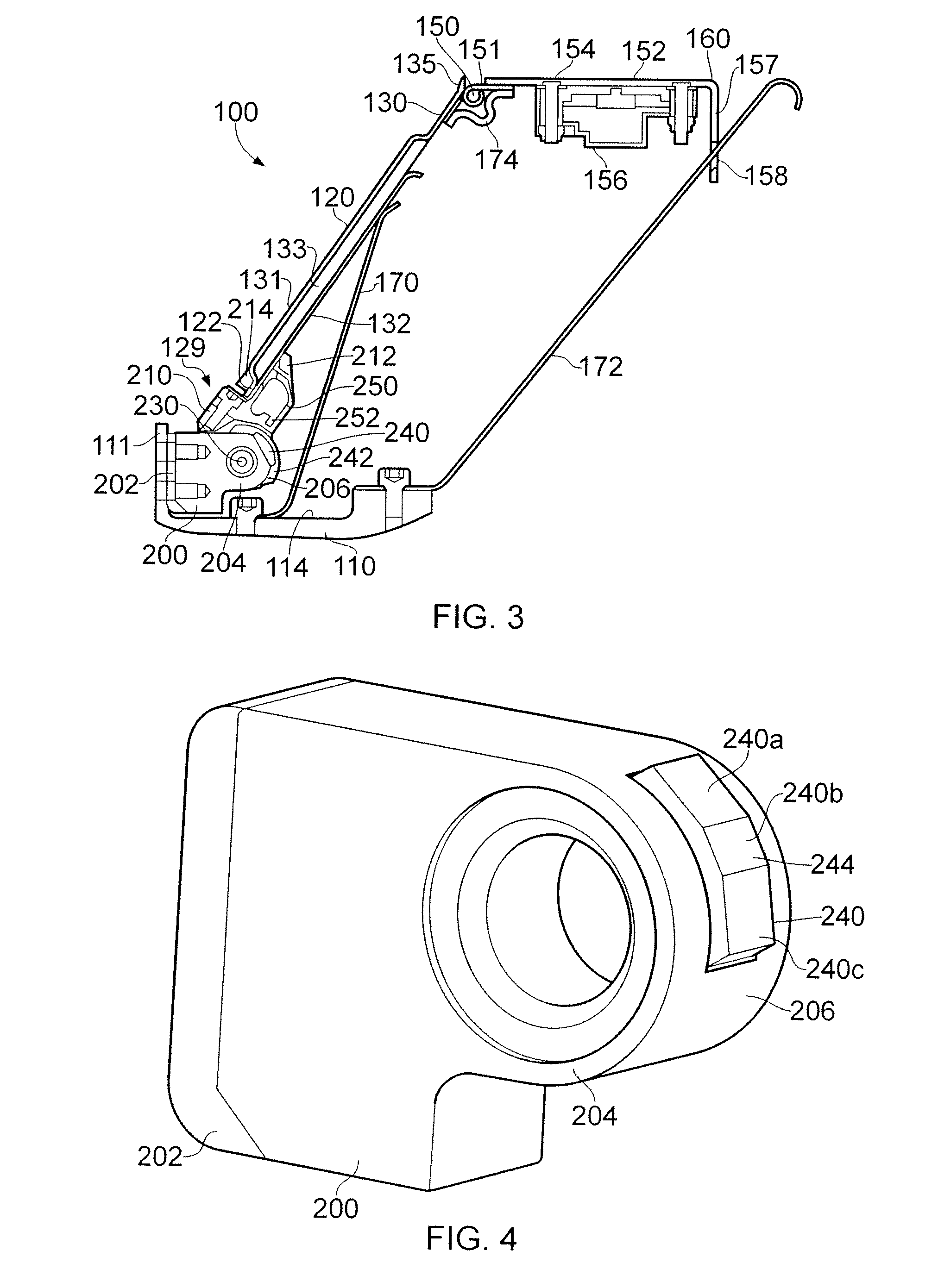Pipeline geometry sensor
a sensor and pipeline technology, applied in the field of pipeline vehicles, can solve the problems of bulky components of rotary potentiometers and shaft encoders, metal loss regions, distortions such as dents, and achieve the effect of high resolution and high density of sensor arms
- Summary
- Abstract
- Description
- Claims
- Application Information
AI Technical Summary
Benefits of technology
Problems solved by technology
Method used
Image
Examples
Embodiment Construction
[0035]FIGS. 1, 2 and 3 illustrate a sensor module 100 according to an embodiment of the invention. The sensor module 100 is mounted on an upstanding flange 111 on an outer surface of a pipeline vehicle 110. Although not shown in FIGS. 1-3, a plurality of such inspection sensor modules 100 may be provided circumferentially around the pipeline vehicle 110, with each sensor module 100 extending laterally from the pipeline vehicle 110. When the pipeline vehicle 110 is being used for inspecting a pipeline, the inspection sensor modules 100 extend radially from the pipeline vehicle 110, and each inspection sensor module 100 abuts a portion of the inner wall of the pipeline. The sensor module 100 comprises a sensor arm 120 having a proximal end 122 that is connected to the pipeline vehicle 110 by a first hinge 129. The distal end 130 of the sensor arm 120 is connected to a sensor sledge 152 by a second hinge 150. The sensor sledge 152 has an inspection surface 154 for contacting (sliding r...
PUM
| Property | Measurement | Unit |
|---|---|---|
| thick | aaaaa | aaaaa |
| orientation angle | aaaaa | aaaaa |
| angle | aaaaa | aaaaa |
Abstract
Description
Claims
Application Information
 Login to View More
Login to View More - R&D
- Intellectual Property
- Life Sciences
- Materials
- Tech Scout
- Unparalleled Data Quality
- Higher Quality Content
- 60% Fewer Hallucinations
Browse by: Latest US Patents, China's latest patents, Technical Efficacy Thesaurus, Application Domain, Technology Topic, Popular Technical Reports.
© 2025 PatSnap. All rights reserved.Legal|Privacy policy|Modern Slavery Act Transparency Statement|Sitemap|About US| Contact US: help@patsnap.com



